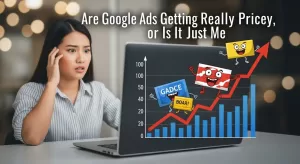Published by NewsPR Today | July 2025
For years, navigating the ad control settings in Google AdSense felt like deciphering a complex legal document. With separate toggles for CCPA, LGPD, interest-based ads, and more, publishers often found themselves lost in a maze of options.
That’s all changed.
In a move to simplify life for publishers, Google has rolled out a major update to its user-based ad-serving controls, consolidating a handful of confusing settings into one powerful, global system. This change, which took effect in January 2024, is designed to give you clearer control, ensure better compliance, and help you focus on what matters most: your revenue.
Here’s everything you need to know about what’s changed and what you need to do.
The Big Shift: From Complex to Clear
The core of the update is simplification. Google has replaced a fragmented system with a unified one.
- BEFORE: You had to manage multiple settings, including toggles for “Third-party ads,” “Interest-based ads,” and specific compliance settings for privacy laws like the California Consumer Privacy Act (CCPA) and Brazil’s Lei Geral de Proteção de Dados (LGPD).
- AFTER: These have all been retired and replaced by a single, streamlined section called “User-based ads.” Within this section, one master switch now governs everything: the “Personalised ads” toggle.
Your New Command Center: Understanding the Controls
Related Article: Exposing AdSense Loading: The “Get Rich Quick” Trick That Will Get You Banned
Your ad-serving strategy now revolves around one primary decision. You can find these settings in your AdSense account under Blocking controls → Ad serving.
This is the central choice that directly impacts your ad performance and earnings.
Option 1: Allow Personalized Ads (The High-Revenue Path)
- What it means: You give Google permission to serve ads based on a user’s data. This includes their search history, demographics, previously visited websites, and known interests. This is also known as behavioural or interest-based advertising.
- Example: A user who was recently shopping for running shoes online might see an ad for a new pair of Nikes on your cooking blog.
- The Result: You serve a mix of highly relevant personalised ads and contextual ads (ads based on your site’s content). Because personalised ads are far more effective for advertisers, they are willing to pay a premium, leading to significantly higher revenue for you. This is the recommended setting for most publishers.
Option 2: Block Personalized Ads (The Contextual-Only Path)
- What it means: You are instructing Google to only serve ads based on the content of the specific page the user is viewing. No personal user data is used for targeting. This is called contextual advertising.
- Example: On an article about gardening, users will only see ads for soil, seeds, or gardening tools, regardless of their personal browsing history.
- The Result: You will only serve contextual ads. While these are still relevant to your content, they are less targeted to the individual user. This makes them less valuable to advertisers, which will almost certainly lead to a sharp decrease in your ad revenue.
It’s important to know that this update does not remove your brand safety controls. The following tools remain separate and fully functional:
- Sensitive Ad Categories: You can still block ads from categories you deem unsuitable for your site, such as “Gambling,” “Dating,” or “Weight Loss.”
- Advertiser URLs: You can still prevent specific companies (like a direct competitor) from advertising on your site by blocking their URL.
Why Did Google Make This Change?
- Simplicity: Managing a patchwork of regional and technical settings was overly complicated. One global control is easier for everyone to understand and manage.
- Global Consistency: As privacy laws expand worldwide, a single, principle-based approach helps publishers maintain compliance more easily without needing a law degree.
- Focus on the Core Distinction: The most fundamental difference in ad serving is whether an ad is based on the user (personalised) or the page (contextual). The new system reflects this clear and important distinction.
Your Action Plan: What Publishers Must Do Now
- Review Your Settings (Don’t Skip This!)
Go to your AdSense dashboard and navigate to Blocking controls → Ad serving. Familiarize yourself with the new layout and confirm your choice. - Understand the Default
If you take no action, your account will default to allowing personalised ads. For most publishers focused on revenue, this is the correct setting, but it’s crucial to be aware of it. - Make an Informed Choice
Decide between allowing or blocking personalised ads. Understand that while blocking them may seem like a “privacy-first” move, it comes at a steep cost to your earnings. For most, the best path is to allow personalised ads while ensuring proper consent. - CRITICAL: Your Consent Responsibility Remains
This update does not change your legal obligations under privacy laws like GDPR and CCPA. You are still responsible for obtaining user consent to collect data and show personalised ads. This means:- You must use a certified Consent Management Platform (CMP) to display a consent banner to users in Europe and other applicable regions.
- Google’s ad serving system will respect the choice the user makes via your CMP. If a user denies consent, Google will automatically serve them non-personalized ads, even if your account setting is “Allow.”
The Bottom Line
Google has taken a significant step toward making AdSense more intuitive. By replacing a cluttered dashboard with a single, powerful control for personalized ads, publishers can now make a clear, strategic decision about their ad serving model.
For the vast majority of publishers, the path forward is clear: allow personalized ads to maximize your revenue, and ensure you have a compliant CMP to manage user consent legally and ethically. This combination puts you in the strongest possible position for success in the modern advertising landscape.




